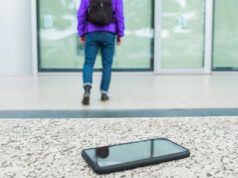Everyone wants to cycle, but not everyone is willing to put the time and effort into it to get started. There are plenty of people out there who would love to see more people cycling, and if you fall into this category, you are likely looking for some tips and advice on how to get started. For the purpose of this post, we will be focusing on the first few months of cycling.
What should you know about cycling before you decide to get on the bike? For a first timer, there are a lot of aspects to consider, on the safety side and on the everyday enjoyment side. We’ve compiled a list of the most important things to know about cycling to make sure you have the best chance of enjoying it in the long run.
As a beginner cyclist, it is important to know what you are doing. If you don’t, you’ll find yourself being knocked off your bike, or at the very least, falling over. This guide will give you everything you need to know, whether you are a complete newbie, or just a beginner.
These cycling recommendations, which include equipment, clothing, nutrition, technique, and more, are targeted for novice cyclists who have just begun their exciting two-wheeled journey. Consider us a riding companion that wants to help you get the most out of yourself and your bike.
We’ve attempted to address the most frequent problems when it comes to learning to ride, but don’t forget that the greatest part about cycling is that it’s a lot of fun.
There’s sure to be something here for you, whether you’re a road rider, mountain biker, or city commuter (spoiler alert: the most important one is at the bottom).
“Ride as much or as little, as long or as short as you feel,” said Eddy Merckx, a famous Belgian ex-pro cyclist who won 11 Grand Tours, including five Tours de France. However, take a ride.”
The best cycling gear for beginners

There’s a lot of great riding gear out there that will keep you comfortable while still looking nice. Smith, Robert
Now, let’s talk about what to wear. There’s a large selection of riding clothes available, in a brilliant array of colors and materials, ranging from the inexpensive to the extravagant. Let’s see how you stack up…
1. A good pair of padded cycling shorts, preferably padded bib shorts, will keep your rear from aching so much. Longer rides will not benefit from heavily cushioned saddles: believe us on this. Wearing padded shorts, fitting a good saddle, and riding until you become accustomed to it are the only ways to be comfortable in the saddle.
2. Always use a helmet while riding. We understand that helmet legislation is divisive, but a good helmet may save your life, and it’s not difficult to find one that’s comfortable, light, and cheap these days. Take a look at our professional evaluations of the finest road and mountain bike helmets on the market right now. (And no, you don’t have to purchase the most costly one; they’re all up to date in terms of safety.)
3. Roadies: clipless pedals (which, confusingly, implies pedals that you clip into with cleats rather of toe-clips) are unquestionably the way to go. The bindings may be set slack enough to come off simply, and you’ll soon learn how to unclip them. They’ll improve your pedaling efficiency significantly.
4. Mountain bikers: use a helmet. Especially if you’re just getting started or acquiring new abilities. At the absolute least, a good pair of gloves and knee protection will come in handy. Consider elbow protection and back protectors if you’re learning large jumps or tough downhill terrain.
5. Invest in a pair of bicycle sunglasses. They don’t have to be expensive or make you seem foolish to keep your eyes safe from bugs, stones, the sun, and rain. Some models have interchangeable lenses, so buy one for sunny situations and one for gloomy, rainy days if you can.
Bike maintenance made simple

Cleaning and lubricating your chain on a regular basis can eliminate creaks and extend the life of your gears. Immediate Media/Will Poole
Let’s get started on keeping your bike happy now that you’re dressed comfortably. It helps to have a friendly bike store nearby in case you need assistance, but you don’t need a shed full of equipment to do this.
6. Clean and lubricate your chain on a regular basis, especially if you’re riding in poor weather. You’ll get rid of the terrible “creak” that riders despise, and more costly components like chainrings will last longer.
7. Check your tyre pressure: suggested pressures are listed on the sidewalls of your tyres, but the correct pressure for you is determined by a variety of variables. A floor pump (also known as a track pump) is a smart investment since it takes less effort to reach the required pressure and comes with a pressure gauge.
In rainy weather, install mudguards/fenders. Your back will thank you, as will your washing machine, and anybody travelling in the car behind you will thank you as well. Some people (including some BikeRadar employees) would argue that they can damage the clean lines of a nice road bike, but do you really care in the dead of winter?
9. Clean your bike on a regular basis: most components can be cleaned with hot soapy water and a sponge, unless the dirt is caked on, in which case cleaning sprays are available. For the drivetrain, use a specialized degreaser (cassette, chain, crankset and so on). Then, using a silicone aerosol, spray your shining bike all over, avoiding braking areas, to prevent dirt from adhering on your next ride.
10. Learn how to mend a puncture and have a repair kit with you at all times (including tyre levers, patches or new inner tube, and pump). You’ll be happy you learned how to repair it yourself when you’re miles away from home and hear that hissing sound.
When riding, what to eat and drink

On lengthy rides, eat little and frequently to prevent the dreaded ‘bonk.’ Immediate Media / Joe Norledge
Now that you’ve taken care of your clothes and equipment, it’s time to think about your fuel source. You could spend a lot of money on specifically designed sports nutrition, but you don’t have to. Look through your home’s cabinets to see what you can bring with you.
11. Drink plenty of water. Whether you choose a water bottle or a hydration backpack, always bring some water with you when you go out. You’ll almost always be able to find a place to refill your cup along the route, and most coffee shops will do it for free.
12. Avoid the dreaded ‘bonk,’ which occurs when your body runs out of gas and comes to a grinding stop. The body can store around 90 minutes of glycogen for high-intensity activities before it has to be replenished, otherwise it will switch to fat burning. The issue with burning fat is that you can’t work at the same degree of intensity. So, whether it’s energy gels, cereal bars, or a banana, maintain eating approximately 100 to 250 calories every 30 minutes. By the way, we enjoy carrot cake.
When you start riding harder or longer than your body is accustomed to, you may experience cramping. One piece of advise often given is to replenish electrolytes lost via perspiration by consuming specially designed sports beverages or creating your own (fruit juice, water, and a little sugar and salt). Nobody understands why cramps happen, but this seems to help.
14. After a long, hard ride, a recovery drink, together with some relaxation, can help the body restore itself. Protein is essential for this, so try to eat 15 to 20 grams within 30 minutes after completing. There are several pre-mixed recovery beverages available on the market, or you may make your own. Milk, one banana, a spoonful of peanut butter, and honey, whirled up in a blender, is our current go-to. Yum.
15. The mid-ride coffee break is a long-standing custom, and there’s good reason for it: caffeine has been shown to enhance cycling endurance. Say something like, “Espresso doppio, please.”
New riders should be aware of the dangers of cycling.

Be aggressive and familiarize yourself with the main and secondary riding postures. Jesse Wild is a character in the film Jesse Wild
This is crucial because we want to keep you secure. The good news is that metropolitan streets and country roads are yours for the taking if you have the proper combination of confidence and prudence. After little practice, you’ll be able to rapidly and correctly evaluate circumstances.
16. If you’re going on a lengthy solo ride, let someone know where you’re going and when you’ll be returning. Some phone applications (such as WhatsApp) make it simple to share your whereabouts with others, which is a simple method to reassure them that you’re secure.
17. Acquire some fundamental city traffic-riding abilities. You’ll gain a lot of confidence as a result. Keep your cool, keep out of the gutter, and remember that you have the same right to be on the road as everyone else. Learn the difference between the “primary” (middle of the left lane) and “secondary” (approximately 1-meter to the left of the moving traffic lane) positions and how to utilize them correctly – see point 3 in our article on how to ride safely in traffic.
18. Because the front brake is considerably more efficient than the rear brake at stopping you, aim for a 60/40 or 70/30 power distribution between the two. However, be very cautious not to lock up. You don’t want to go over the handlebars since modern brakes are very strong.
19. When cornering, make sure your outside pedal is at the lowest position and that you apply pressure to it. This will increase your grip, especially in the wet, and reduce your chances of slipping out.
20. Learn to bike in a group on the road. By taking turns in the front, a pleasant group of cyclists is considerably more efficient (and therefore consumes less energy), but this necessitates riding close together. You also don’t want to create any mishaps. So maintain your cool, don’t make any abrupt moves or brakes, and avoid “half-wheeling” (riding slightly ahead of the person next to you). Keep an eye out for hand signals and alert oncoming riders about any hazards they may not see until it is too late. They’ll treat you the same way they treat you.
Techniques for riding

When you’re riding with your friends, it’s a lot more enjoyable. Immediate Media / Steve Behr
We’ve arrived at the last part, riding technique. There is much discussion over the “correct” approach for all types of riding, however there are a few absolutes:
21. Figure out your riding posture. If your bike is the proper size, your saddle is at the right height, and your handlebars are set up correctly, you’ll be more comfortable, powerful, and overall happy. We strongly advise riders of all abilities to have a professional bike fit, which can be done at any good bike store.
22. Make sure the gears aren’t ‘cross chained.’ To put it another way, if you’re in the biggest chain ring, don’t use the biggest cassette cog (ditto, smallest chain ring, smallest cog). This puts additional strain on the chain and the whole system. It’s not good for your bike, plus it’s inefficient.
23. Aim for a high, consistent pedaling cadence, approximately 70 to 90 revolutions per minute if possible. Your cadence will drop and your power output will decrease if you grind a gear too aggressively. When approaching a steep climb, change into a low (easy) gear right before you need it.
24. Make some riding companions. Joining a cycling club or convincing your friends to dust up their old bikes are two options. However, if you have a buddy to ride with, you’ll be more encouraged to go out and ride.
25. Make a happy face! Bicycling is a lot of fun. Recognize other riders, have fun, and then eat cake. Don’t stress about having the “correct” gear or the “greatest” bike. The best bike is the one you love riding the most.
That concludes our list of 25 beginner cycling advice. Don’t agree with what they’ve said? Do you think we left anything out? Please let us know in the comments!
If you’re new to cycling, you may want to start with a bicycle with training wheels. This allows you to learn the basics of cycling like balancing and pedalling. These beginner cycling tips will help you learn how to cycle properly.. Read more about how to ride a bicycle for the first time and let us know what you think.
Frequently Asked Questions
Related Tags:
cycling for beginners training planbeginner cycling distancecycling tips for beginners lose weighthow to choose cycle for beginnershow to ride a bicycle for the first timecycling for beginners over 50,People also search for,Privacy settings,How Search works,Cycling shorts,Bicycle pedal,Bicycle helmet,Cycling shoe,Cycling glove,See more,Road bicycle,Bicycle,Mountain bike,Hybrid bicycle,Cyclo‑cross bicycle,Folding bicycle,Cycling,Road cycling,Track cycling,Cross‑cou… cycling,BMX,Cyclo‑cross,Schwinn IC2 Indoor Cycling Bike,Sunny Health & Fitness Be…,Hyper 29 inch Carbon Fiber Men…,Schwinn Men's Phocus 16…,Vilano R2 Commuter,Vigbody Exercise Bike Indoo…,cycling for beginners training plan,beginner cycling distance,cycling tips for beginners lose weight,how to choose cycle for beginners,how to ride a bicycle for the first time,cycling for beginners over 50,bike riding tips for beginners,tips for riding a bike for the first time






